Technology That Upholds Permaculture Values
Earth Care
1. Jellyfish Robot:
One of the risks of checking coral reefs for damage from pollution is harming the creatures that form the reef, because they’re notoriously sensitive to even small changes or obstructions in their environment. To address this issue, a college student named Thierry Bujard used engineering and biomimicry to create a jellyfish-shaped robot to help scientists inspect the condition of coral reefs while minimizing the risk of killing the coral during exploration. Designed with maneuverability in mind – as well as the fragility of the reefs the robot would explore – he gave the machine a soft rubber outer shell, and propellers that replicated the agile swimming patterns of tentacled marine animals. Capable of reaching places a human would struggle to without hurting the coral, and outpacing most marine vehicles in terms of handling, the jellyfish robot could help humans keep track of and restore damaged reef systems safely.
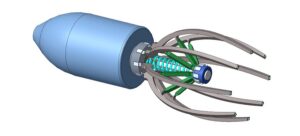
Sources:
https://www.eng.ed.ac.uk/about/news/20210122/squid-inspired-robot-masterstroke-design
2. Ecosia:
While the ads that search engines push tend to benefit the engine itself and the organizations who pay to advertise themselves more than anyone else, Ecosia uses their ad revenue for a different cause. Having partnered with several nonprofits from many countries, Ecosia makes it a point to put the revenue from every search a user makes and every ad they interact with toward forest restoration. To reduce the environmental impact of the searches themselves, the company has built solar plants to provide power to the servers at their data center. They also note user privacy as one of their major values, which they act on by allowing users to search without sending third-party trackers their way, and by detaching a user’s name and device from any search they make within a week.
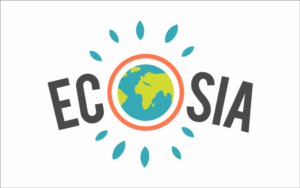
Source:
3. Litterati
Litterati is an app used as part of an effort to document instances of litter across the globe and put them into a database, to increase our understanding of how much trash we tend to leave around public spaces and inspire people to find ways to prevent litter. The app tasks users with taking a photo of garbage they find on the ground and tagging it by category, object, material, and brand. The AI applied to the app reads these tags and learns what each object looks like, so it can tag them automatically in the future. By documenting what items are most commonly left behind in a certain area and who makes them before putting them in an appropriate receptacle, people can make proactive efforts like urging an organization to stop production of a disposable plastic good, which could reduce plastic waste over the long term.
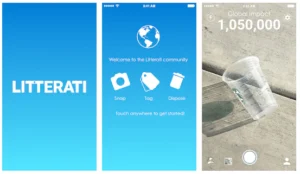
Source:
People Care
1. Braille attachments for computers
Digital Braille displays and keyboards allow people who are blind or visually impaired to read and write with smartphones and computers, machines that had only been accessible to people who could see the screen for many decades. Keyboards equipped with Braille keys allow people with impaired vision to type out emails and use search engines more easily, and specialized displays read the text on a page via electrical signals and move a series of pins to convert it to Braille characters, allowing access to things like ebooks. They tend to be lightweight to allow people to easily carry them in a bag or case, so they can be used in professional and academic settings as well as casual use. As such, these devices could help blind university students greatly in their academic pursuits, and make tech-centric workplaces more accessible to more workers.
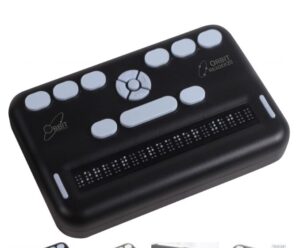
Sources:
https://www.orbitresearch.com/product/orbit-reader-20/
2. Plant Nanny
A game development company called Sparkful created Plant Nanny as a unique way for a person to keep track of their daily water intake. The gameplay aspect works like a pet simulator in which you take care of a variety of charming plant-creatures, which someone can take care of by logging each glass of water they drink throughout the day. The plants grow as the player takes care of them — and themselves — evolving similarly to a Pokemon. The app further encourages healthy hydration practices by letting them set custom goals based on factors like how active they are, and awarding achievements for meeting those goals consistently.
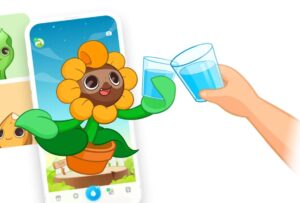
Source:
https://sparkful.app/plant-nanny
3. Calm
Calm is an app centered around mental health, and comes with a myriad of tools for addressing multiple issues. After a person selects which goals they want to work toward and which symptoms they want to alleviate, the app will give them recommendations for tools based on what they select. The person is not limited to these options, though — they still have access to the full library of tools even after personalizing their account. The features that Calm offers include mindfulness sessions, a range of music playlists for productivity and relaxation, and guided meditation.
![]()
Sources:
https://www.medicalnewstoday.com/articles/calm-app#how-it-works
Fair Share
FreeRice is a website connected to the United Nations World Food Programme, and was made to support their Sustainable Development Goal to end world hunger. It combines donation with an educational trivia game, seeking to simultaneously expand users’ knowledge on various topics, provide them with entertainment, and give them a way to help raise money for food assistance in vulnerable countries. With every question answered correctly, the UN’s sponsors donate the monetary equivalent of 10 rice grains. While this means it takes a lot of questions for a whole bowl of rice, it encourages users to play often in order to learn more and support others more. I remember playing this game a lot with my classmates when I was still in elementary school, so when I think of websites and tech that combine entertainment with charity efforts, that’s the example that sticks out in my head the most.
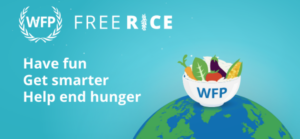
Sources:
https://www.facebook.com/freerice/photos/a.10150704190607792/10157274493962792/?type=3
https://freerice.com/about-us
https://freerice.com/home
2. Too Good To Go:
Restaurants and food courts tend to produce a lot of food waste — I’ve heard people say that even UMaine’s dining halls tend to toss out any bakery items that people didn’t want to take throughout the day. An app called Too Good To Go exists to mitigate that issue, allowing food-related businesses to sell their surplus food instead of throwing it in the garbage. Not only does this help the environment by working to slow the negative impacts of food waste, such as wasted freshwater for irrigating crops and the production of excess greenhouse gases, but also helps signed businesses earn more money and lets people buy quality food for a reasonable price.
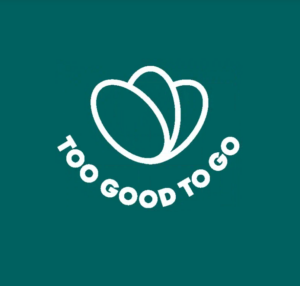
Sources:
https://www.toogoodtogo.com/en-us/about-us
https://www.toogoodtogo.com/en-us/food-waste-home
3. Babbel
Babbel is a language learning app with a highly-customizable learning program, allowing people to decide how they want to learn the language based on their unique needs. Users of the app can create a unique schedule for themselves according to their daily schedule, which aspects of a language they’re interested in learning about, and whether or not they already have experience in said language. The app utilizes gamification to encourage people to keep up with their lessons, showing how far a user has come with a progress bar. The curriculum covers reading, writing, and speaking, and the app even has a flashcard feature to aid memorization. Someone can opt to take their lessons on their own or attend live video-call classes, in which they can speak with a teacher one-on-one or work with a small group of classmates. Besides addressing language barriers, the Babbel company also collaborates with a variety of NGO organizations, such as The Syrian Youth Assembly and the Spanish Commission for Refugees.
![]()
Sources:
https://www.babbel.com/en/magazine/babbel-social-impact-team
Originally Posted: September 4, 2024
Edited: September 11-13, 2024
Changes made: Added two more technologies for every category and their respective sources; added images for each category and provided sources for the images; some formatting adjustments , like centering headers and source lists, for ease of reading
